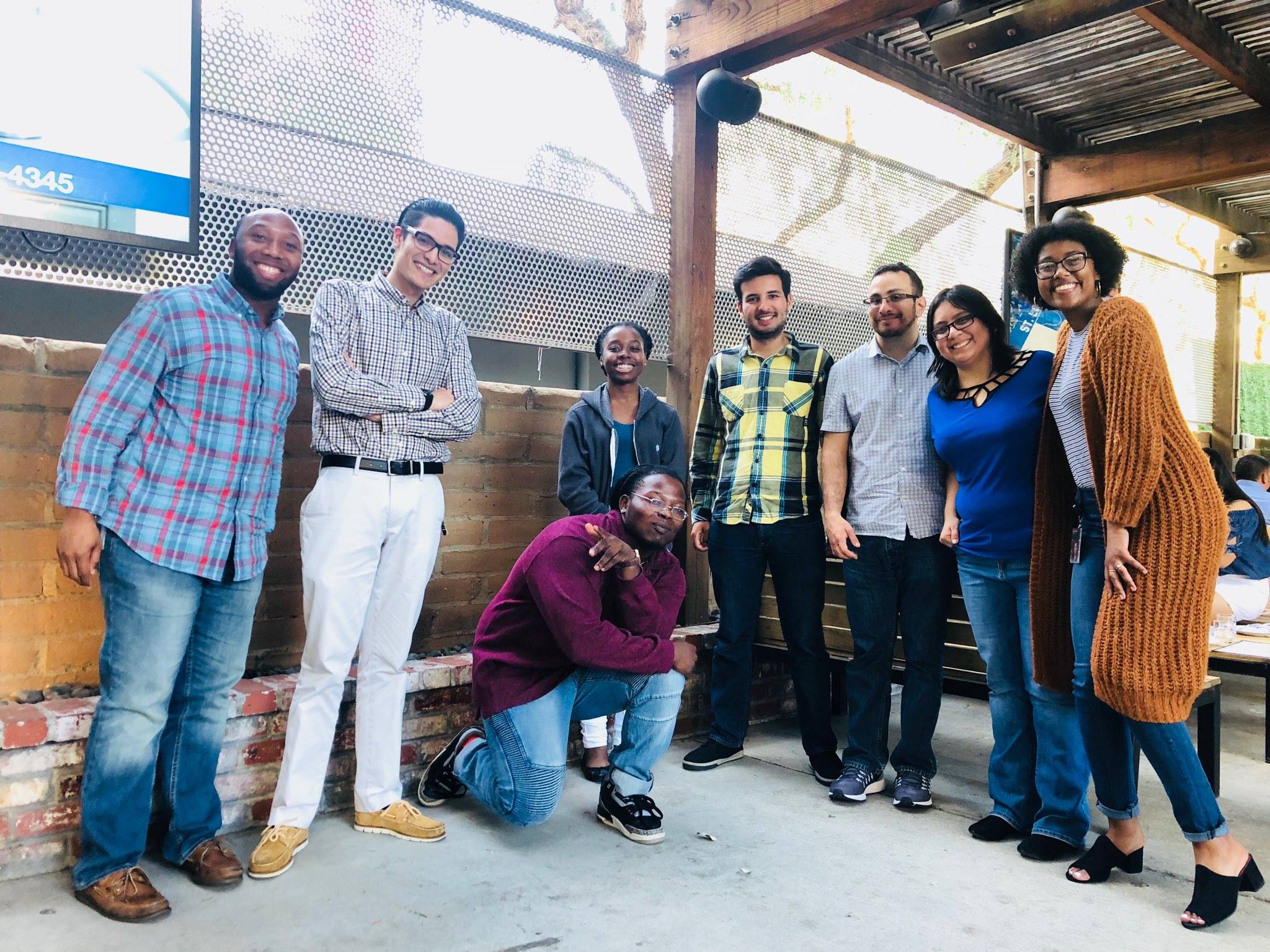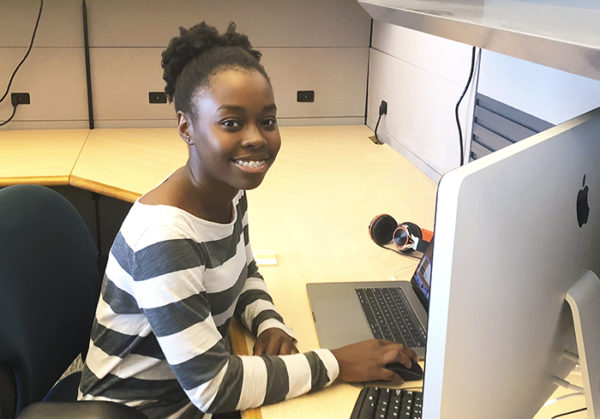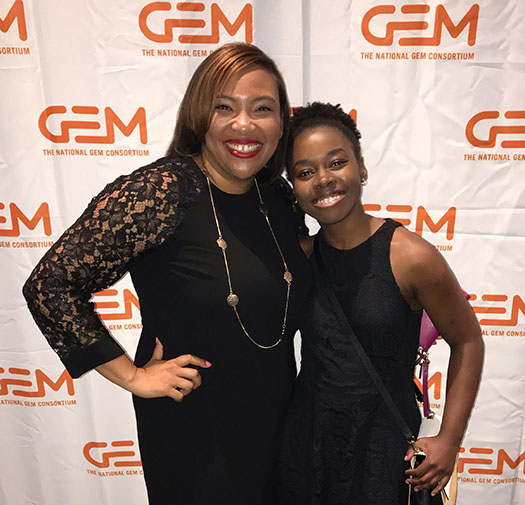By Meredith Alexander Kunz, Adobe Research
“Research is about following your intuition. You’re doing something that no one knows how to do yet—and you’re discovering how to do it. That’s exciting,” says Ruth Petit-Bois, an Adobe Research summer intern and GEM fellow.
Not long ago, graduate-level technical research was far from Petit-Bois’ plans. “Getting a master’s degree had never really crossed my mind,” says the Kennessaw State University graduate from Georgia. She intended to complete her undergraduate degree in software engineering and work in the field.
That all changed when Petit-Bois was accepted for a fellowship by the National GEM Consortium. The Virginia-based non-profit works in partnership with corporations, government labs, and academic institutions to offer graduate fellowships and internships in STEM fields to students from underrepresented communities. As a corporate GEM sponsor, Adobe is supporting Petit-Bois’ studies and internships. Today, Petit-Bois is not only pursuing a master’s at Georgia Tech as a GEM fellow—she is also considering a PhD next.
In the meantime, she is spending two summers working as an intern at Adobe. In 2018, Petit-Bois interned at Adobe Research, learning a range of new technical and research skills. Her summer 2018 project, mentored by Zhihong Ding and Walter Chang, focused on applying natural language processing to photo editing.
GEM Fellows at Adobe: Real Skills
Currently, Adobe supports 10 new GEM fellows each year, in addition to continuing fellows who are completing their degrees.
The GEM-Adobe partnership dates to 2012, when Sara Perkovic, director of research operations and communications in Adobe Research, spearheaded an effort to support more diverse interns in technical fields. The partnership initially launched with funding from the Adobe Foundation, and in the intervening years it has been managed by Adobe’s university talent team.
Adobe Research staff annually mentor several fellows each summer. GEM fellows also intern in other areas of Adobe. GEM fellows are both master’s and PhD students, and Adobe welcomes both.
The true value of the program, Perkovic says, is to “open doors for these students.”
“The program provides access to graduate scholarships and to corporations that offer meaningful internships. It gives students real skills, and the chance to see what it’s like to work for a large organization,” Perkovic explains. She continues to help drive Adobe’s partnership with GEM, serving on the GEM’s board of directors and attending GEM’s annual conference.
A Golden Ticket
Adobe has so far made five full-time hires of GEM fellows who have interned at the company. One of Adobe’s GEM hires is hardware research engineer TJ Rhodes.
Rhodes first heard about GEM from a friend as a senior in college at Worcester Polytechnic Institute. He had been planning to get a job and stay in New England, but he decided to fill in the one-page application without any expectations. “It’s super competitive. Around 2,000 people applied that year, and only 110 were picked,” Rhodes says.
He still remembers the moment he found out he’d been accepted—via an email that reached him while he was hanging out at his fraternity house.
“It felt impossible. It’s a Golden Ticket, like in Charlie and the Chocolate Factory—a fast track to success,” Rhodes says. “Not only do you get paid to attend graduate school debt-free, you can also get real experience because of the internships.”
At the time he learned his fellowship was sponsored by Adobe, he had never been to California and knew the company by reputation only. Rhodes pursued his first GEM internship with Adobe Research in San Jose right after his college graduation, and the second while earning his master’s degree at Drexel University.
“My experience at Adobe was unforgettable,” he says. Rhodes won the “Intern Journey to Adobe” contest. He worked with Gavin Miller, head of Adobe Research, on creating an innovative hardware project, a material scanner.
“I had a chance to showcase my talents,” Rhodes recalls. It did not go unnoticed: “We were interviewed for magazine, and we talked about how interns at Adobe do real work.”
That real work translated into a real job for Rhodes, a unique position developing pioneering forms of hardware for Adobe Research. “I love my job because of the challenges and opportunities. I get to work on cutting-edge, brand-new stuff.”
Making Fellows Part of the Family
The engaged community at Adobe helps make the intern experience for Adobe GEM fellows a special one. Senior Manager of the Americas Employee Resource Center Tomeka Seckinger is at the forefront of this effort. Based in San Jose, Seckinger wanted to get involved in the program. “It’s great to give opportunities to students who might not have had them otherwise,” she says.
She has helped organize a summer schedule of events for GEM fellows, including workshops on essential skills outside of technical fields. That includes refining their resumes and interviewing.
On top of that, Seckinger does much more: she opens up her home so that a handful of GEM fellows can live with her and her family in Morgan Hill.
“Most fellows are not from here, and they don’t always have family able to help financially. I try to make them part of my family while they are here,” says Seckinger. “It’s been a really rewarding experience.”
Seckinger got to know Petit-Bois during her internship, mentoring her through Adobe’s Black Employee Network. “It was really cool to share some of the things I’ve learned with Ruth, and to support her.”
GEM fellows are making an outsized impact in their summers at Adobe, and Seckinger looks forward to encouraging recruitment of more of them for permanent roles. “These students are amazing people, who bring a different perspective,” she says. “They’re qualified talent, hungry to do the job.”


